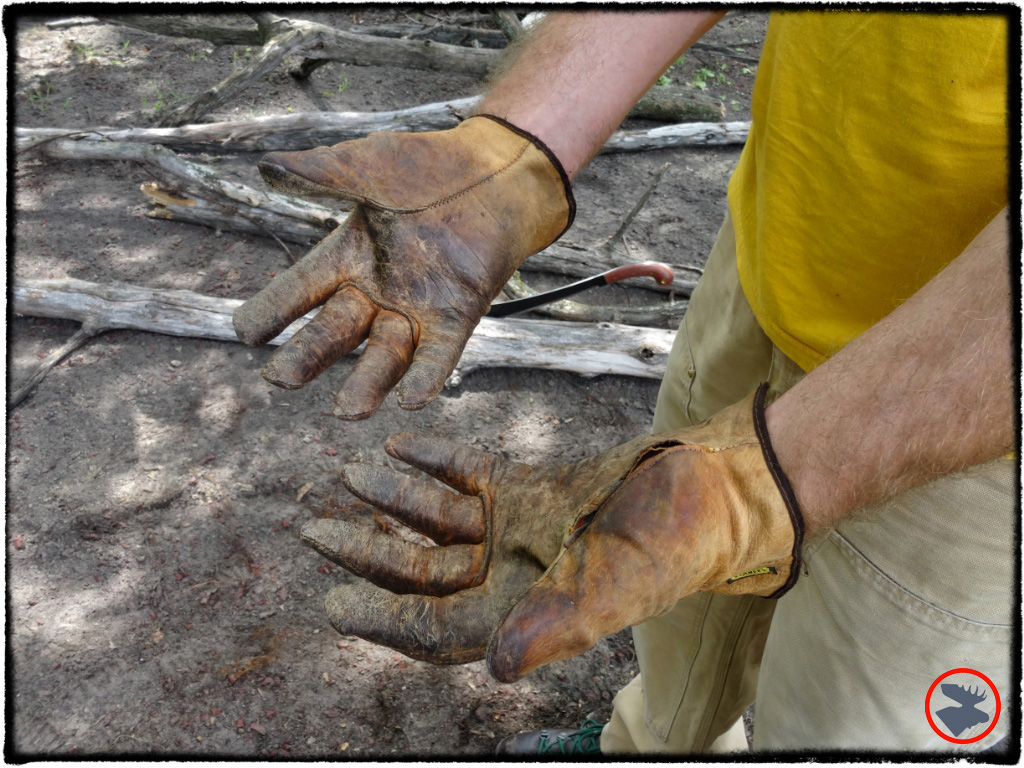Years ago, I arrived at camp on the north shore of Lake Superior late one evening for a weekend of hiking on the Superior Hiking Trail and day trips paddling the Boundary Waters Canoe Area with some buddies. It was late Fall. The weather was cool and drizzly. I set to work starting the fire using a new knife, scraping it back and forth on some birch bark to make fine tinder. Well, one slip on the wet bark, and I had a nice little cut on my forefinger. Haste, poor technique, and dark and wet conditions resulted in the accident. Even though it was a shallow cut, it nagged and slowed me down the entire weekend. The rain didn’t stop, so bandages refused to stay on, and it became whitish-gray and puffy, preventing decent use of my paddle, interfering with my ability to cook, and ruining my sleep. It just sucked all around.
“A good pair of gloves likely would have prevented the injury—and all the frustrations that followed.”
A good pair of gloves likely would have prevented the injury--and all the frustrations that followed.
That was then.
Today, one item that has a permanent place in my pack is a good pair of leather gloves. The only time I leave them behind is on lightweight alpine backpacking trips where I'm counting every ounce, know I'll be primarily on trail, and relying mostly on a stove for cooking. Even then, it's tough to leave my leathery protection out. In my opinion, hands are the most valuable tool in the outdoors, and a smart woodsman will go out of his way to keep them functioning. Camp and trail life can be a real pain with cut, blistered, burned, or otherwise damaged hands.
Value You Your Hands. Value Gloves.
Gloves can be invaluable for:
Gathering and readying firewood
Moving firewood around to manipulate the fire
Handling hot cookware or the stove if you're hot tent camping in the Winter (I’ll often pull one glove off and use it as a hot pad in my other gloved hand to double up the insulation)
Pushing aside brush when clearing a path
Protecting your hands from mosquitoes or flies (on our recent trip to Lost Canoe Lake, we were ecstatic to have gloves on the portage trail to thwart the ravenous mosquitos who zeroed in on any exposed piece of flesh)
Protecting your hands from poison ivy, poison oak, thistles, thorns, and every other painful plant in the outdoors
Preventing blisters while paddling, shoveling, working with rope, chopping wood, etc.
The Best Gloves for Outdoor Adventures
So, what kind of gloves should you have on hand (I had to say it!) for your next outdoor trip? Here are a few gloves I use all the time:
Canvas-backed rawhide gloves. They’re cheap, functional, and provide you with a bit of a sloppier fit, so they're easy to slide on and off. On the down side, these gloves do not allow for complete dexterity since they have a slightly larger fit, and they also wear out fairly quickly.
Canvas-backed rawhide gloves are cheap and functional.
Canvas-backed rawhide gloves.
Thin leather gloves. With a snug fit, these gloves offer a high level of dexterity, are light-weight, and give you a noticeable level of protection from the elements. However, these gloves are definitely more difficult to pull on and shuck off—especially if it’s hot out and your hands are sweaty.
Thin leather gloves (Stanley) offer a ton of dexterity.
These thin gloves wear out fairly quickly. You can see the wear and tear--they illustrate the amount of abuse my palms would've taken.
Thick leather gloves provide great protection from heat and the elements, but dexterity is in short supply.
Thick leather gloves. Great for camp cooking and breaking up firewood, these gloves can take a beating without breaking a seam. They provide a high level of protection from campfire heat and hot cookware, too. With the thickness though, comes much less dexterity for carving, knot tying, or shooting, which makes these gloves great, but not all-purpose gloves.
You can find any of the gloves I listed above all over the place and at all price points--from Mills Fleet Farm and military surplus stores, to most home improvement stoves. I've always had buckskin or cow rawhide, but have heard that goatskin gloves are superior. So, in a year or two when I wear out my current sets, I'll give the goatskins a try.
When you're on the trail, you need to protect your number one tool—your hands! You have numerous options, so don’t go on your next outdoor adventure without a sturdy pair of gloves!








It’s that time of year again—mud, rain, snow, and freezing rain. When you’re outdoors (or walking the city streets) in the next few weeks, keep your feet dry and happy. Here are a few trail-tested options we wear to keep our dogs from barking.